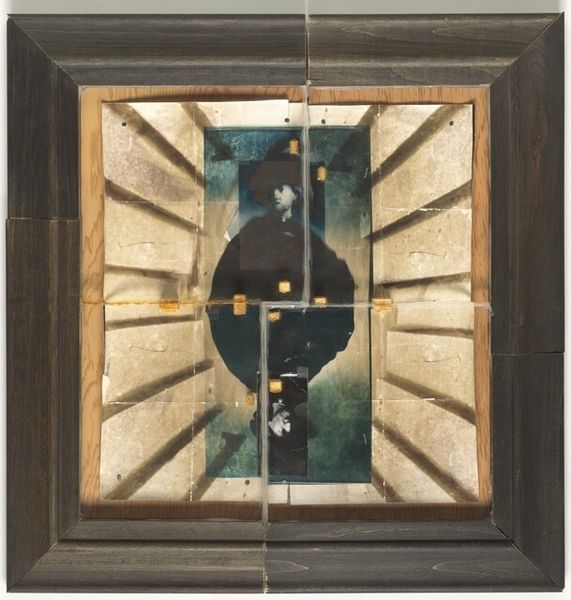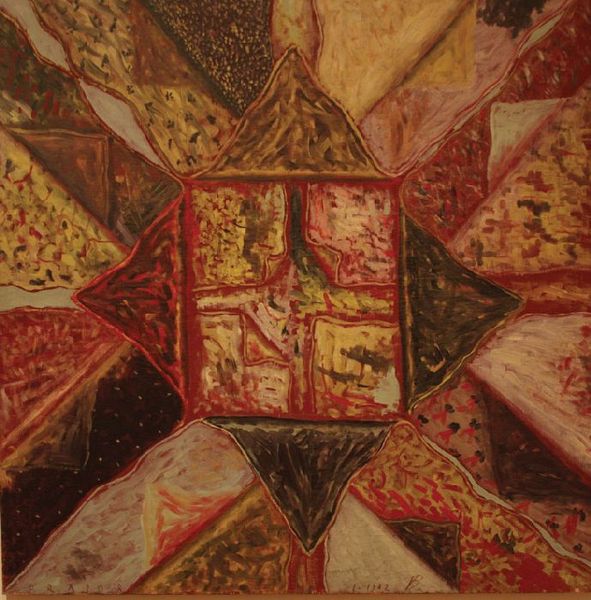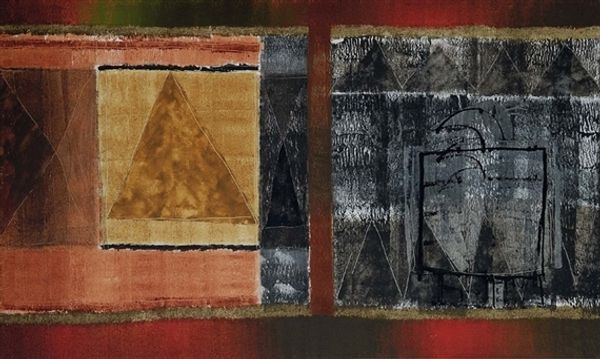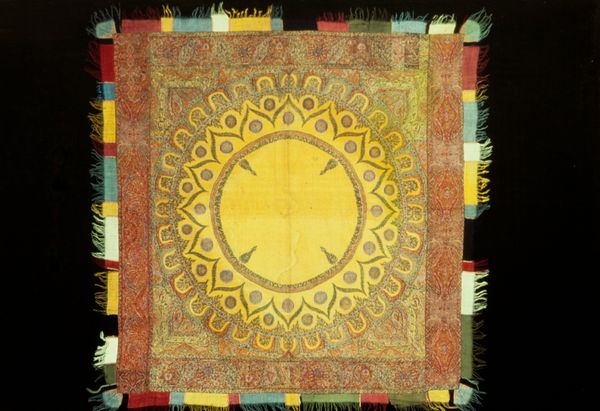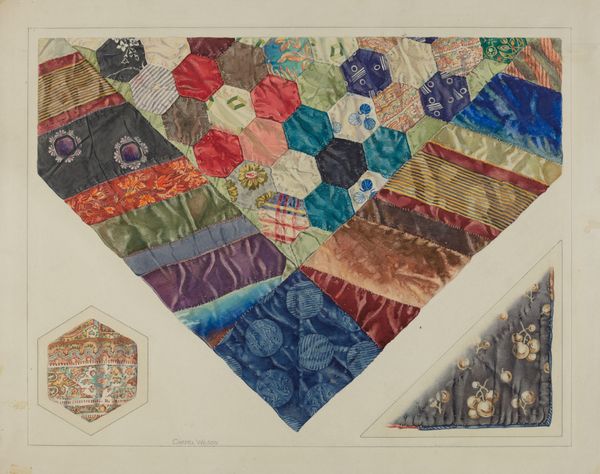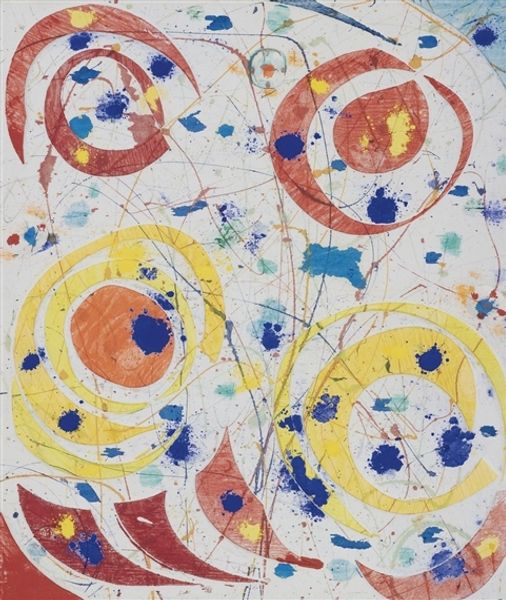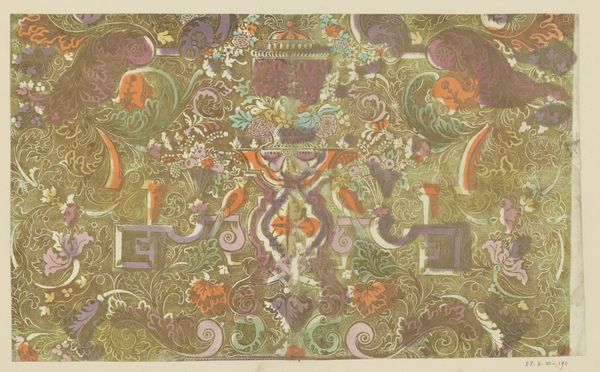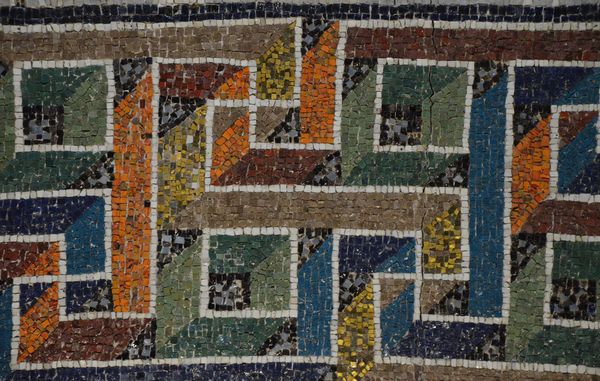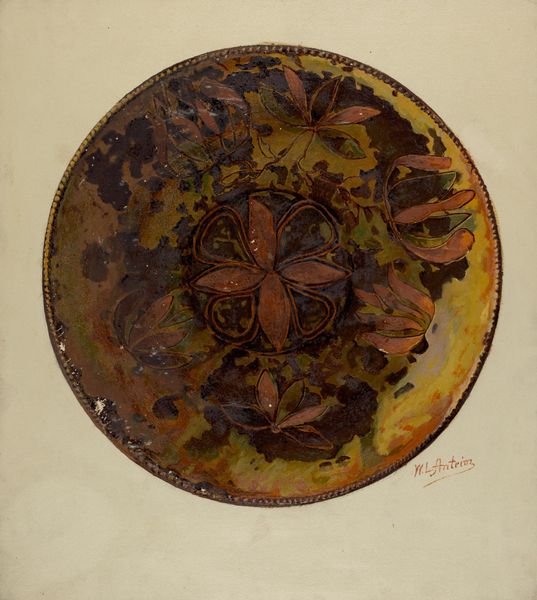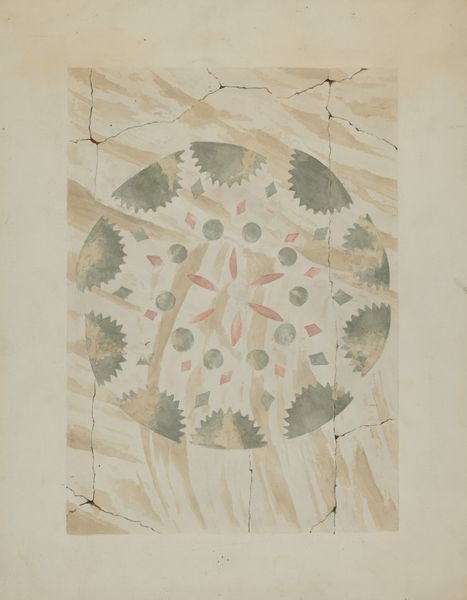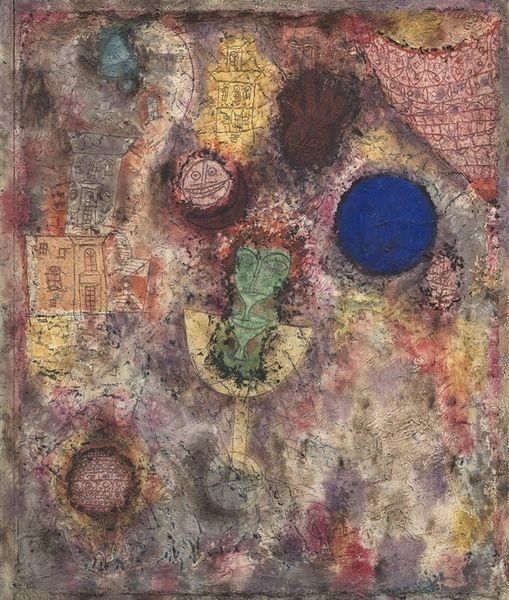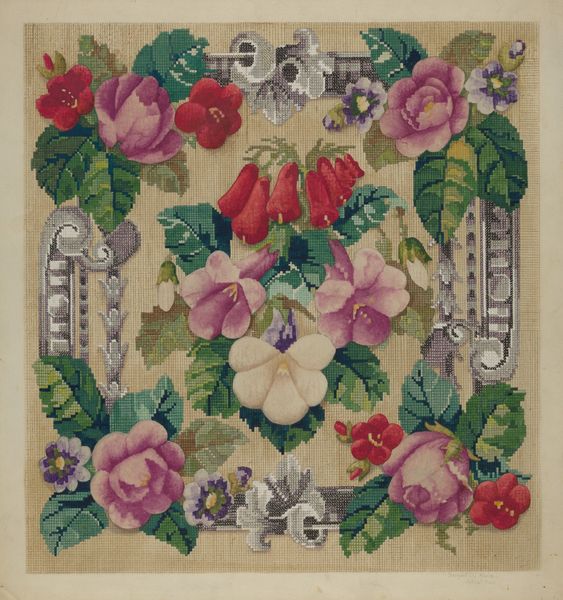
painting, watercolor
#
water colours
#
painting
#
watercolor
#
geometric
#
abstraction
#
modernism
Copyright: Luciano Bartolini,Fair Use
Curator: Luciano Bartolini created this watercolor painting, "Arianna & Pitagora," in 1987. The canvas features a centered, roughly square field contrasted by a darker surrounding frame. What is your initial reading of this composition? Editor: I’m immediately struck by the visual tension. The central square teems with watercolor washes in pastel shades. The contrast with the surrounding inky darkness is compelling, it’s almost as if the lighter square tries to emerge from it. And I notice how geometric shapes intermingle with expressive strokes, with linear elements juxtaposed to circular and amorphous color washes. Curator: Yes, it presents this tension masterfully! I am interested in how the symbolic weight carried by those simple geometries in the 80s engaged with larger cultural and artistic currents, for example with Land Art as it became a central feature in museum settings. Geometric symbols are used within defined social and cultural structures to explore societal power dynamics, with strong political associations attached. Editor: That’s a valid contextualization. What I notice, purely looking at formal characteristics, is the rhythm established by the circles. The addition of gold leaf within those perfectly defined perimeters is extremely effective. Curator: It certainly amplifies the visual impact and anchors the shapes. Gold leaf traditionally symbolized power and authority, as a symbol of the status quo in society. This could be an attempt by the artist to reference and even undermine such long standing beliefs of our cultural heritage by repurposing old symbols with modern and newer artistic approaches. Editor: You are right! Perhaps a reflection of art history’s use of those techniques as well? Considering how modernity has also repurposed the signifiers that came before, this sounds like a conscious use of that tension to trigger memory. Curator: Indeed. Bartolini's blend of media and shapes offers a nuanced commentary, particularly through the use of geometrical abstract modernism to investigate established themes and beliefs of cultural power and its symbolic associations. Editor: Exactly, and the chromatic choices also amplify these effects. Now I cannot unsee those layers of references. Curator: Well, there's always something to learn, when we look close enough! Editor: That's where the pleasure lies, doesn't it?
Comments
No comments
Be the first to comment and join the conversation on the ultimate creative platform.
